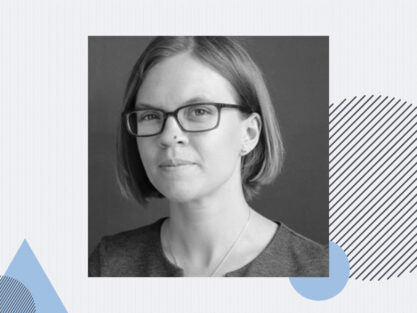February 1, 2021 – Rebekka Lee, a research scientist in the Department of Social and Behavioral Sciences at Harvard T.H. Chan School of Public Health, director of the Community Engagement Program at Harvard Catalyst, and a member of the Massachusetts Public Health Association Task Force on Coronavirus & Equity, discusses how best to ensure that COVID-19 vaccines are distributed equitably in the state.
Q: What are the biggest issues in getting vaccines distributed fairly in Massachusetts?
A: As the state enters Phase 2 of its vaccine distribution plan on February 1, it’s going to be shifting from place-based distribution—in locations like health care settings, prisons and jails, homeless shelters, and long-term care facilities—to the general public, individuals age 75 and older. With that comes lots of new challenges.
We need to look at where we’re placing vaccination sites, who’s staffing those sites, and what communication to residents looks like.
The biggest problem right now is the state’s lack of engagement with the communities that have been experiencing disproportionately high rates of COVID-19—for the most part, low-income communities of color and immigrants. We really need to think about how best to strengthen communication about vaccines among these groups. We need to equip community leaders with education about the vaccine, as well as information on how to register for vaccines, so they can share it with their networks. By community leaders, I mean churches, elder-serving organizations, and grassroots groups like the Black Boston COVID-19 Coalition. We will not be able to overcome the legacy of mistrust of our government and medical institutions overnight, but engaging these community leaders is an essential first step that I wish had been part of the state’s strategy from the start.
Q: News reports have described difficulties with signing up for vaccination appointments. What are the equity problems you see with the process?
A: Currently, the only way people can register for the vaccine is through a website. Not everyone is internet-savvy, though. On January 28, the governor announced that the state will soon begin phone-based registration. So at least we now know that there will be some way to sign up by phone. This will be much easier for some people, such as the elderly.
The state also needs to address language barriers—making sure the phone line has interpreters in many languages, and making sure there are tools to translate everything on the website. For instance, the map that shows locations where you can get vaccinated is only in English. And then, once you click on one of the places on the map, you go to another website, and what are the chances that those are translated? Probably pretty slim.
And some of the more accessible, visually appealing materials the state has developed—like the infographic about the different phases of the vaccination rollout—I haven’t seen those in other languages.
Q: What do you hope to see Massachusetts do in the coming weeks to improve vaccine distribution and uptake among those groups that have been hardest hit by COVID-19?
A: We know from the state’s weekly vaccine dashboard that, as of January 28, only 2.6% of those who have been vaccinated identify as Latino and only 3.3% as Black, whereas nearly 40% identify as white. These racial inequities are particularly alarming since we know that people of color are at greatest risk from COVID-19. I think the state needs to be really strategic about rolling out vaccines to make sure it can narrow these disparities, which could get even worse if the state doesn’t develop an approach that really takes the community in mind.
I’m hoping to see both an increase in the total vaccines distributed and a larger proportion of Latino and Black residents receiving the vaccine. These are not mutually exclusive targets. It’s not enough to simply have more vaccines available for everyone and to smooth out the kinks in the website. If you’re trying to address inequities, you need a lot more planning and intentional engagement with community partners.
The state’s COVID-19 advisory group recommended having 20% additional vaccine be allocated to those communities that have experienced a disproportionate burden from the disease. So in addition to engaging with the community leaders to build trust, we also need to put vaccination sites in the places where communities of color live—places like Chelsea, Everett, Revere, Dorchester, Mattapan, and Hyde Park. I’m hopeful as there are new sites being added every day, including the Reggie Lewis Center in Roxbury and some pharmacy-based sites in some of these areas. But I would really like to see more tangible evidence of these areas being prioritized soon—we need to make access for communities that are experiencing the greatest COVID-19 burden as easy as possible.
